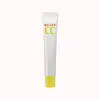What's inside
What's inside
 Key Ingredients
Key Ingredients

 Benefits
Benefits

 Concerns
Concerns

 Ingredients Side-by-side
Ingredients Side-by-side

Water
Skin ConditioningNiacinamide
SmoothingGlycerin
HumectantDimethicone
EmollientCyclopentasiloxane
EmollientDipropylene Glycol
HumectantPEG/PPG-17/6 Copolymer
SolventButylene Glycol
HumectantCaprylyl Glycol
EmollientPEG-Crosspolymer
Hydroxyacetophenone
AntioxidantPentylene Glycol
Skin ConditioningPEG-60 Hydrogenated Castor Oil
EmulsifyingParfum
MaskingIsohexadecane
EmollientTrehalose
HumectantSodium Polyacrylate
AbsorbentXanthan Gum
EmulsifyingDimethiconol
EmollientDisodium EDTA
Sorbitan Oleate
Emulsifying1,2-Hexanediol
Skin ConditioningPolyglutamic Acid
Skin ConditioningGlycyrrhiza Glabra Root Extract
BleachingLaurus Nobilis Leaf Extract
MaskingPhenoxyethanol
PreservativeCitronellol
PerfumingLimonene
PerfumingLinalool
PerfumingWater, Niacinamide, Glycerin, Dimethicone, Cyclopentasiloxane, Dipropylene Glycol, PEG/PPG-17/6 Copolymer, Butylene Glycol, Caprylyl Glycol, PEG-Crosspolymer, Hydroxyacetophenone, Pentylene Glycol, PEG-60 Hydrogenated Castor Oil, Parfum, Isohexadecane, Trehalose, Sodium Polyacrylate, Xanthan Gum, Dimethiconol, Disodium EDTA, Sorbitan Oleate, 1,2-Hexanediol, Polyglutamic Acid, Glycyrrhiza Glabra Root Extract, Laurus Nobilis Leaf Extract, Phenoxyethanol, Citronellol, Limonene, Linalool
 Reviews
Reviews

Ingredients Explained
These ingredients are found in both products.
Ingredients higher up in an ingredient list are typically present in a larger amount.
Butylene Glycol (or BG) is used within cosmetic products for a few different reasons:
Overall, Butylene Glycol is a safe and well-rounded ingredient that works well with other ingredients.
Though this ingredient works well with most skin types, some people with sensitive skin may experience a reaction such as allergic rashes, closed comedones, or itchiness.
Learn more about Butylene GlycolParfum is a catch-all term for an ingredient or more that is used to give a scent to products.
Also called "fragrance", this ingredient can be a blend of hundreds of chemicals or plant oils. This means every product with "fragrance" or "parfum" in the ingredients list is a different mixture.
For instance, Habanolide is a proprietary trade name for a specific aroma chemical. When used as a fragrance ingredient in cosmetics, most aroma chemicals fall under the broad labeling category of “FRAGRANCE” or “PARFUM” according to EU and US regulations.
The term 'parfum' or 'fragrance' is not regulated in many countries. In many cases, it is up to the brand to define this term.
For instance, many brands choose to label themselves as "fragrance-free" because they are not using synthetic fragrances. However, their products may still contain ingredients such as essential oils that are considered a fragrance by INCI standards.
One example is Calendula flower extract. Calendula is an essential oil that still imparts a scent or 'fragrance'.
Depending on the blend, the ingredients in the mixture can cause allergies and sensitivities on the skin. Some ingredients that are known EU allergens include linalool and citronellol.
Parfum can also be used to mask or cover an unpleasant scent.
The bottom line is: not all fragrances/parfum/ingredients are created equally. If you are worried about fragrances, we recommend taking a closer look at an ingredient. And of course, we always recommend speaking with a professional.
Learn more about Parfum